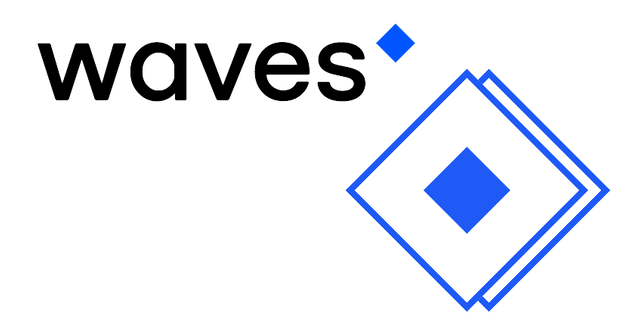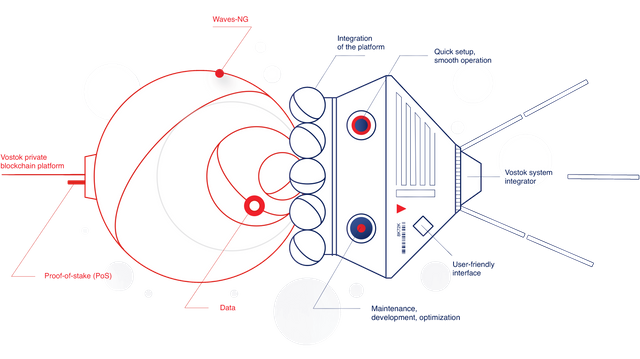The Waves Platform is one of those rare blockchain projects. It has had a functioning & stable main-net for more than 2 years and has a consistent history of updates and feature-delivery from its development team. With an established user-base, it is now embarking on a major upgrade towards turing-complete smart contracts that will bring it's all-round practicality and versatility to the forefront of the industry. It has also never been successfully attacked.
It's safe to say that Waves is in very limited company today.

What is Waves?
Waves is an open source blockchain, developed by a team in Moscow under the leadership of Alexander Ivanov. It focuses on decentralisation, accessibility, stability and ease of use and this is reflected in it's core moto, 'blockchain for the people'.
Waves raised 30,000 Bitcoin during their ICO between April and June 2016, making it one of the largest blockchain fundraisers ever concluded. In today's valuation the Bitcoin raised is worth US$ 210 million. They have since been putting this money into development.
Through it's multi-platform wallet, Waves already offers the following functionality to users:
- Token issuance for tokenisation, crowd-funding, ICO's and more
- Asset trading through it's decentralised exchange
- Token transfers
- Fiat and prominent crypto-currency gateways (USD, EUR, TRY, ETH, BTC, BCH, DASH, ZCH, LTC, XMR...)
- Token leasing to earn interest via pooling
- Smart contracts (on test-net. Main-net July 2018)
- Data transfer and Messaging
The release of Waves smart contracts in July 2018 is hotly anticipated by the community and will be the most significant upgrade since Waves main-net launch back in June 2016. It will enable a whole raft of new features, including atomic swaps and multi-signature wallets.
Leased Proof-of-Stake
Waves utilises a leased proof of stake (LPoS) mechanism for incentivising consensus. In proof of stake, nodes stake their balance of the native asset, in this case WAVES, in the hope of producing the next block in the blockchain. The chance of being selected to produce the next block is proportional to their asset staking balance. In return for successfully being selected as the block producer, nodes receive the transaction fees for the transactions included in that block.
In LPoS, any user is able to lease their own asset balance to a node and earn a proportional amount of the fees earned by that node. On the Waves platform, this feature enables all users the ability to earn 'interest' on their WAVES holdings.
The Waves Client
The Waves client (or wallet) is already in it's 42nd beta iteration and now boasts an intuitive user interface, high stability, and high speed decentralised trading. It also supports 8 languages. It's the most user-friendly blockchain interface I have come across so far.

The Waves Client
To date, there are 268,000 registered Waves clients.
Waves DEX (De-centralised Exchange)
There has been a lot of hype about decentralised exchanges over the past year. During this time, the Waves DEX has been chugging away in the background, fully operational, with increasing users and volume over time. Today the DEX is regularly achieving in-excess of US$10m volume per 24 hours.
The wallet allows users to nominate a centralised trade-matcher that is open to anyone to develop. The actual assets are always in the hands of the participants, are directly traded peer-to-peer and do not pass through a centralised agent. Given this, it is impressive that the speed and execution consistency of trades is at the same level as a centralised exchange.
The DEX already has gateways to the major fiat currencies and crypto-currencies as well as the ability to trade the thousands of tokens launched on the Waves platform.
Once Smart contracts are released, the DEX will implement atomic swaps that will allow direct cross-chain trading to any assets on any other blockchain. ERC 20 assets will be the first to be implemented in this way.
Eco-system
The Waves ecosystem has been growing and diversifying for two years. There are people and organisations participating in many ways from operating nodes, running gateways, launching DApps, developing new features and simply participating in using the platform and communicating with the community.
More than 15,000 digital assets have been created on the platform, not all of which are projects of course. It costs only 1 WAVES to create your own digital asset (token) so many people have done this as an experiment or even just for fun. However on the serious end, Waves is currently the second-most utilised platform, after Ethereum, for projects that have ICO'd and subsequently reached the dizzy heights a listing on CoinMarketCap. Waves is looking to increase this process and has launched a dedicated start-up incubator, 'Waves Lab' for promising projects that wish to launch on the platform.
Tokenomica is a dedicated compliance unit being set-up by the Waves team that will provide services to businesses who wish to get involved in the token economy, without taking any regulatory risks in their markets. As part of this, in 2017, Waves partnered with Deloitte to begin the development of a legal framework for wider adoption of blockchain technologies.
The Waves Community Token (WCT) is an important part of the Waves community that provides a voting tool for community assessment of crowdfunding campaigns launched on the Waves platform. It is also used as a means to incentivize long-term holding by providing an additional income stream for WAVES token holders in the form of regular asset distributions. WCT is a virtual community organization being launched in several stages based on the technical maturity of the Waves platform.

Info-graphic for the Waves Ecosystem
In terms of size of community, a good reference can be social media. Waves has a decent following of 130,000 on twitter, 74,000 on Facebook and a Telegram channel with 26,000 subs.
What's under the hood?
Waves blockchain developers have had a balanced approach to the underlying blockchain trade-offs between 1) scale (tps), 2) decentralisation (no. full nodes) and 3) consistency (absence of conflicts / double spends etc). Typically you can max out on any two but not all three. Waves appear to have optimised well across all three.
Scale
The Waves node development team has been busy over the past year upgrading the core system software to enable features such as Waves next-generation (NG) which increased transaction speeds to beyond 100 tps. When Waves-NG was added to the main-net in January 2018 it became the fastest production blockchain in the world.
Waves-NG is a next-generation consensus algorithm, based on the Bitcoin-NG proposal made by Cornell Computer Science academics Emin Gün Sirer and Ittay Eyal.
Bitcoin-NG was designed to address bitcoin’s scalability issues, increasing network throughput to hundreds of transactions per second. Waves-NG adapts this proposal to Waves’ proof-of-stake consensus, and is the first ever implementation of the protocol in a production blockchain system.
Decentralisation
There are currently 96 active nodes globally that are quite well distributed across the globe. While this is nothing close to Bitcoin's 12,000 nodes, for the current adoption level of Waves, it is certainly decentralised enough.
Consistency
Waves blockchain height reached 1,000,000 blocks in May 2018 - that is a very good track record relative to the rest of the blockchain world. The platform has seen more than 28 million transactions and has been processing in excess of 100,000 Tx per day over the past few months.
In this time there have been no reports of double spends or conflicts that persisted. There have also been no successful attacks or security problems on the blockchain.
Moving forward & Vostok
The Waves team have identified the fact that public, permissionless blockchains like Waves are still at an early stage of development and adoption. Many have made the analogy that we are in the early 90s relative to where the internet was in its development. On the other hand, private blockchains appear to have more immediate use-cases owing to their higher degree of security and scalability that come from permissioned network participation. In this way, businesses can leverage the advantages of blockchain without exposing themselves to the aspects that still require development before mass adoption. The Waves team have cited these reasons for the upcoming launch of a sister blockchain called Vostok.

Some Conceptual Features of Vostok
Vostok will use Waves technology (effectively a fork of Waves) and apply it in a way that is optimised for corporate applications. It appears that their business model will be the issuance of VST tokens through-which business services can be paid for. Vostok will be interoperable with Waves and will allow cross-chain transactions in a permissioned manner. The full details of how Vostok will work are not yet available but it seems to be a shrewd move given the traction other permissioned chains like Ripple, Hyperledger Fabric and R3's Corda have been getting from the corporate world. I believe Vostok will focus on geographies including CIS countries and South East Asia.
Great info!
Downvoting a post can decrease pending rewards and make it less visible. Common reasons:
Submit
Waves platform, a very good platform where you can creat your own cryptocrruncy & tradre with it 100%
Downvoting a post can decrease pending rewards and make it less visible. Common reasons:
Submit
Thanks @rynergy, for well explained information about Wavesplatform.
Downvoting a post can decrease pending rewards and make it less visible. Common reasons:
Submit
Very well explained @rynergy, I will look into it in detail. Thanks for sharing.
Downvoting a post can decrease pending rewards and make it less visible. Common reasons:
Submit